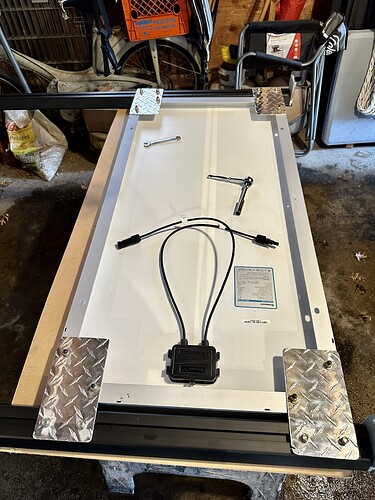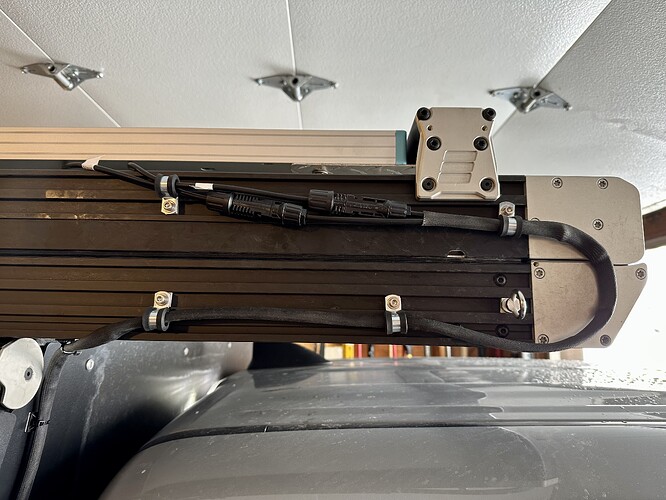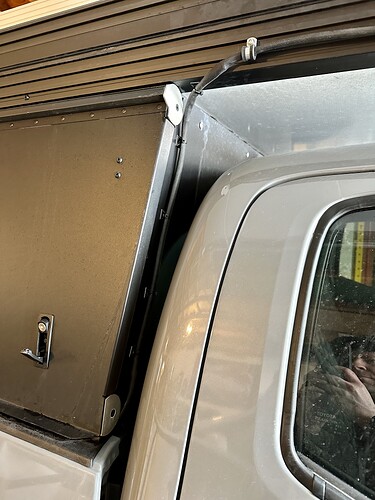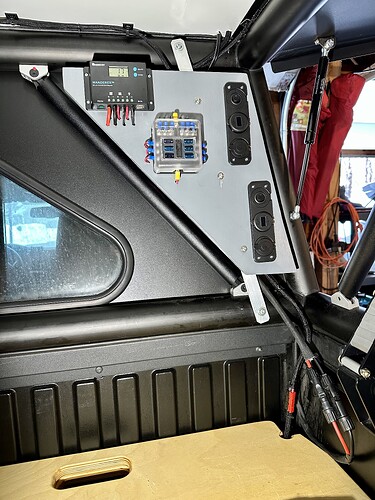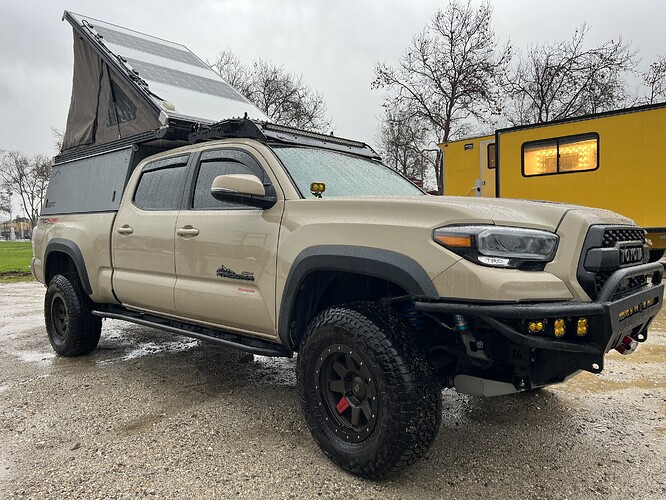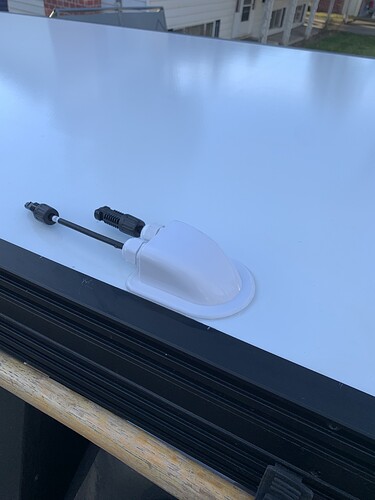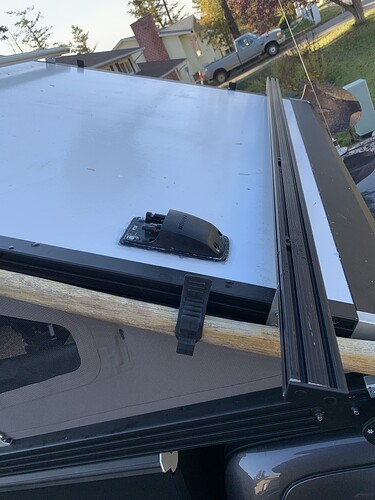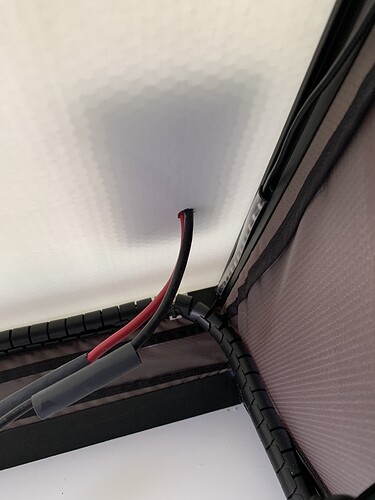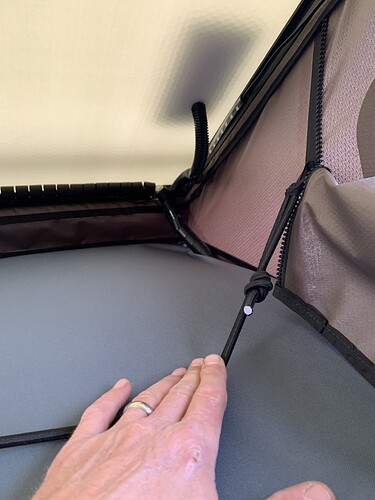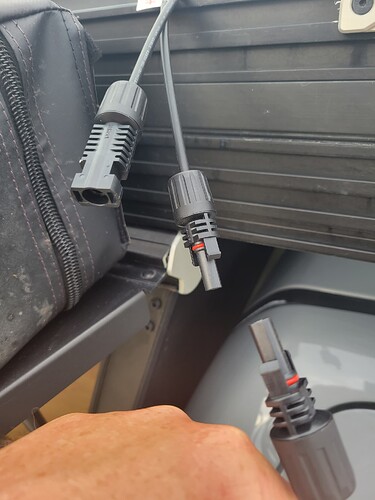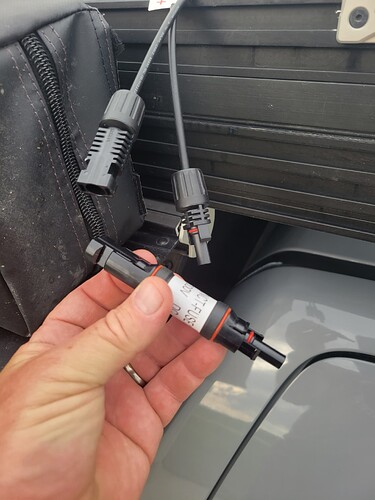Sometimes a brand will ask you to place the muffler in a certin design/ allocation becuase if, it were to happen it could kill the unit, however it maybe rare…
This unit installation instructions shows the exhaust pipe to be mounted upward…
I think the concern is mainly on longer exhaust runs in boats and rv’s, as well as the possibility of ocean spray, rain or splash. For your application it’s not necessary as the heat over the entire length of the pipe is above boing point.
The newer Planar mufflers don’t even have a drain hole anymore, they are fully seal welded. I never had a drop leftover in mine when I take it apart.
I agree with you!
Finally got around to mounting my panel. Went with a 100 watt Renogy. Mounted to the underside of the beef bars. Managed to sneak the wires through the small gap where the side of the bed meets the front of the bed (Tacoma). Nice to not have to drill any holes this way.
Are you going to install some sort of shelf device to place your electronics on while they are plugged in/charging?
No, doesn’t really seem to be an issue. Usually gear piled up there anyway. I also have power wired to the tent up top and back by the tailgate.
I didn’t notice any photos of people going in through the roof. I would prefer doing that so i can hide the wiring underneath the panels. Do the wires interfere with closing the camper much?
No, it doesn’t interfere at all.
This is the camper I have now. Renogy wiring gland.
And this is the first time I did it on the first camper with a salvaged gland from the local RV place.
Awesome, thanks. Thats a good idea to go far forward and sneak it on the side like that. I have a gen 1 with pre drilled hole through the fixed bed panel. I wish it was on the passenger side though, as that is where battery, fridge, etc is.
I am planning for my upcoming camper instal in June. My goal is to build out my rig in a way that allows me to live out of it while I work as a raft guide for the summer.
I see a lot of folks on here are building out solar systems that go from panels to car/marine batteries and installing inverters etc. My question is what are the pros/cons or benefits to that verse simply buying a “solar generator” like the Goal Zero Yeti that seems to have it all built in already?
Admittedly I am a novice when it comes to anything electrical and could be missing something obvious but I would greatly appreciate any insight/thoughts/feedback.
The other thread you started has answers for you.
https://forum.gofastcampers.com/t/solar-generator-vs-solar-to-batteries-etc/20628?u=jasont
Did you cut the wires of the renogy solar panels? I’m trying to run two flexible 100 watt solar panels and the wiring to run them in parallel is a mess. It would seem easier to cut them and join them together at different lengths.
I’ve done quite a bit of automotive wiring with butt connectors, but I’ve never worked with solar cables.
@pablomoca I didn’t cut the panel wires; but I did cut the runs to the controller. In multiple spots actually. I have one run that comes down through the gland to connectors flush with the box floor. This allows the disconnection of the panel in the event of camper removal.
While you could ‘butt’ solder and heat shrink (probably the cheapest method). I would suggest purchasing the panel adaptors. You can run the panels either in parallel or series using these; but yes they are bulky. Personally, I’d opt for using an adhesive back zap holder and make the connections on the roof. Less visible there, then you should just have your +/- either running down the side or going through a gland. I strongly suggest using a gland on the roof. I know it’s intimidating and pigeon holes you into the cable entrance; but it is a much more elegant approach.
Then I also think, ‘Shitco’ has a Branch connector block that attaches to the extrusion. Personally I don’t think it’s the most elegant approach.
Hope that helps.
I bought the solar plug kit off Amazon and used an extra 3 feet of my 30 ft 8 gauge wire to make my own harness
I’ve got a question that I know I’m going to end up feeling silly asking. I’ve attached photos.
I’m installing a 100w Renogy panel on my beef bars. I bought the kit, so it has 10’ pos (red ring) and neg (black) extension cables to run into the camper and connect to the charge controller. The panel has pos (red ring) and neg (black) cables, labeled, that are to be connected to the extension cables. I also have a Renogy waterproof fuse (red ring) that came with the kit, and is intended to be placed in-line on the pos cable. So, the male/female connectors appear to be on opposite cables, reversing red and black, and the fuse connection seems to be intended for the negative connector, which is incorrect. What am I not understanding? Sorry for this simple question, but I don’t get it.
The rings can be used as a reference; but you’re always better off to be doing this stuff with a Multimeter. Then the Color doesn’t ‘really’ matter, because you’ll know it’s hooked up in the right polarity to your charge controller. As long as positive voltage is getting to the positive terminal, the gender of the connector doesn’t discriminate.
So with the fuse it is Non-directional and actually can be used in either connector, just depends on which way you want your current to flow (UK/US) ![]() Electronics nerd joke
Electronics nerd joke ![]()
Did you have to buy any extra hardware to piggy back the two solar panels ? If so can you share what you used?
